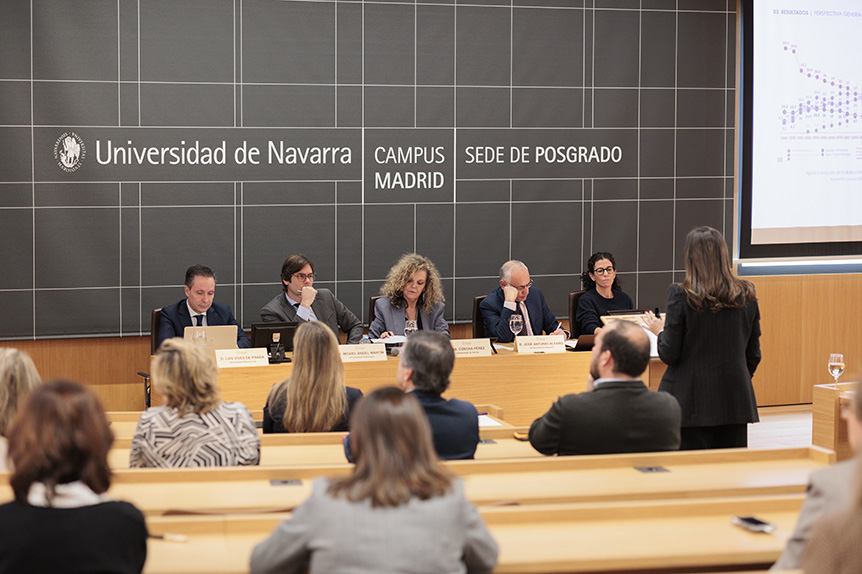Last Friday, January 10, Rocío Elizaga Puig, who has completed the doctoral program in Applied Creativity at School of Architecture, defended her doctoral thesis entitled 'Strategy and competitiveness in the children's textile trade sector in Spain'.
thesis analyzes the children's fashion sector in Spain from the perspective of strategic management, using tools such as the analysis of the microenvironment (through Porter's five forces) and the macroenvironment (through PESTEL analysis). Through in-depth interviews with association representatives core topic and a comprehensive secondary analysis of data of the sector, research identifies specific dynamics that characterize this segment, including the role of the business model , rivalry between established competitors, consumer influence and barriers to new entrants. This integrative approach not only addresses the lack of previous programs of study on this area, but also provides strategic insight into the sector by connecting its structure, challenges and opportunities to broader economic patterns.
 As result, thesis provides an exploratory view of how different operators (specialists, generalists and large distributors) navigate a complex environment marked by low margins, economies of scale and changes in consumer behavior. In addition, practical implications are presented for development sustainable growth strategies, especially for small companies facing competitive and operational pressures. This work not only establishes the instructions of the knowledge academic of the sector, but also provides a basis for future research and proposals for strategic management tailored to the children's fashion market.
As result, thesis provides an exploratory view of how different operators (specialists, generalists and large distributors) navigate a complex environment marked by low margins, economies of scale and changes in consumer behavior. In addition, practical implications are presented for development sustainable growth strategies, especially for small companies facing competitive and operational pressures. This work not only establishes the instructions of the knowledge academic of the sector, but also provides a basis for future research and proposals for strategic management tailored to the children's fashion market.
Rocío tells us what the process of research has been like and what she has learned from it:
1. What motivated you to investigate the children's fashion sector in Spain from a strategic management perspective?
My interest in children's fashion has both personal and professional roots. From my experience in creating a brand in this sector, I have always observed the lack of structured academic programs of study analyzing its competitive and strategic dynamics. This gap in the research inspired me to explore the sector from Strategic Management, as this discipline offers robust tools to understand market forces, industry structure and opportunities for companies in such a competitive and constantly changing environment.
2. What would you highlight about the learning process during the realization of doctorate?
Most enriching was the opportunity to connect academic theory with business internship . Interacting with industry associations core topic allowed me not only to validate theoretical concepts, but also to gain unique perspectives that enriched my analysis. In addition, learning how to structure a sector analysis using strategic tools such as Porter's Forces and PESTEL analysis was an intellectual challenge that transformed my understanding of the sector and business strategy.
3. What do you consider the most difficult part of your doctorate?
The main challenge was to overcome the limitation of access to detailed primary and secondary sources on such a specific sector. Convincing stakeholders core topic to participate in interviews and supplementing information gaps with secondary research required patience, adaptability and constant reformulation of approach of my research. In addition, maintaining a balance between the academic depth and relevance internship of the study has been, at times, a complex challenge .
4. After presenting your thesis , what do you keep after these years of doctorate?
I am left with the satisfaction of having provided a pioneering and structured analysis of the children's fashion sector in Spain, which not only fills an academic gap, but also offers practical tools for companies and associations. This path has strengthened my analytical, research and communication skills, and has reaffirmed my passion for understanding how strategy can help organizations adapt and thrive in competitive environments.
